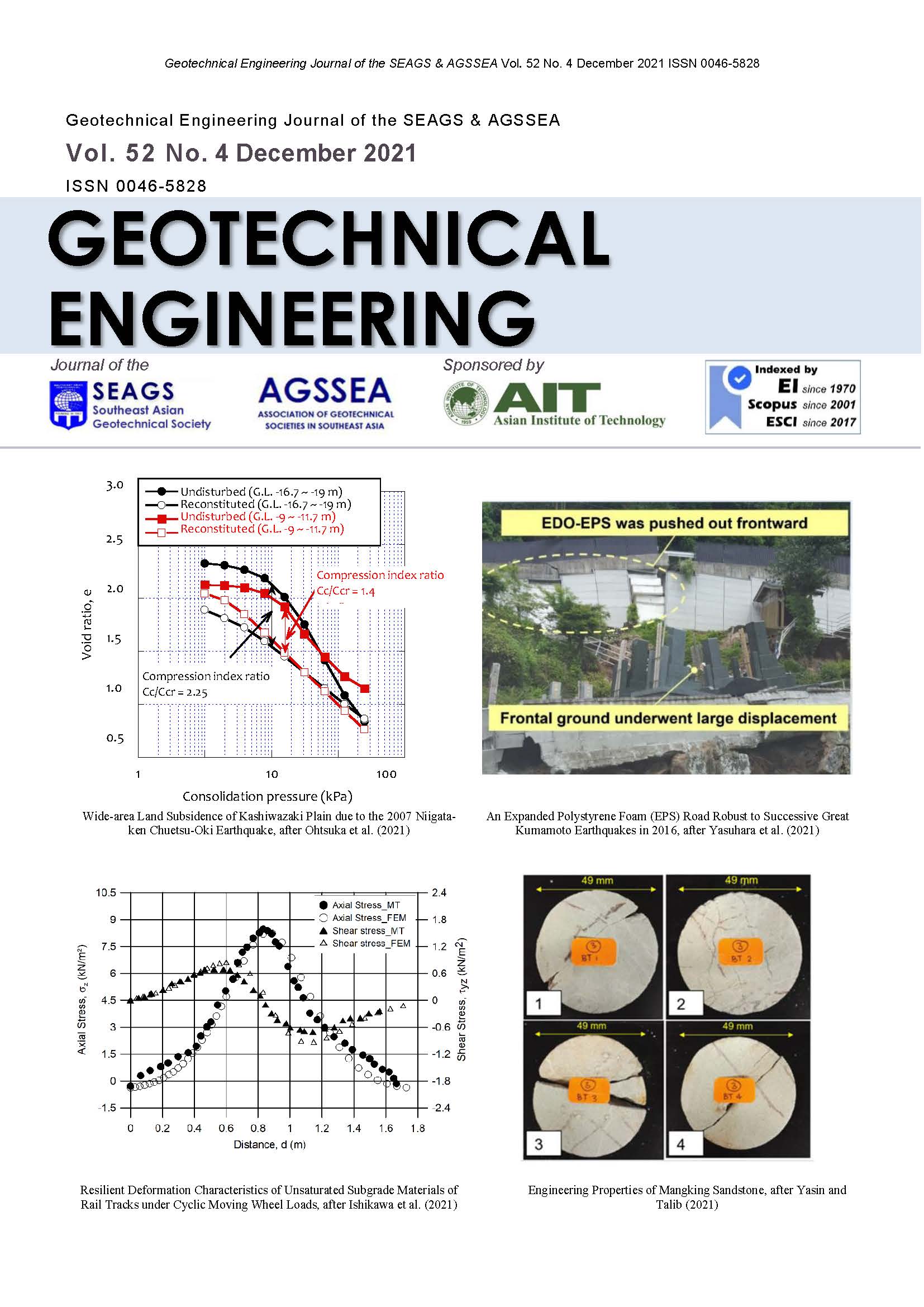Assessments of Soil Parameter Reduction Coefficients from One-Dimensional Ground Response Analyses
Main Article Content
Abstract
Soil parameter reduction coefficient (DE) has been suggested by Architecture Institute of Japan (AIJ) and Japan Road Association (JRA) for over twenty years. The reduction coefficient denoted as DE was used to reduce stiffness and/or strength parameters of the soil due to liquefaction caused by earthquakes. This study discusses the observations based on soil parameter reduction coefficients calculated from one-dimensional dynamic responses on artificial ground sites under horizontal earthquakes. A lumped mass model of horizontal sand layers is used. Soil liquefaction is modeled using the UBCSAND model. The factor of safety against liquefaction and the cyclic strength ratio for soils at various depths are calculated from the mechanical analyses to find the reduction factors based on the suggestions from JRA and AIJ. In addition, the ratio between the degraded shear modulus and the initial shear modulus of the soils are computed and compared to the reduction coefficients found varying the influence factors.
Article Details

This work is licensed under a Creative Commons Attribution-NonCommercial-NoDerivatives 4.0 International License.
Copyright © 2019 Association of Geotechnical Societies in Southeast Asia (AGSSEA) - Southeast Asian Geotechnical Society (SEAGS).


